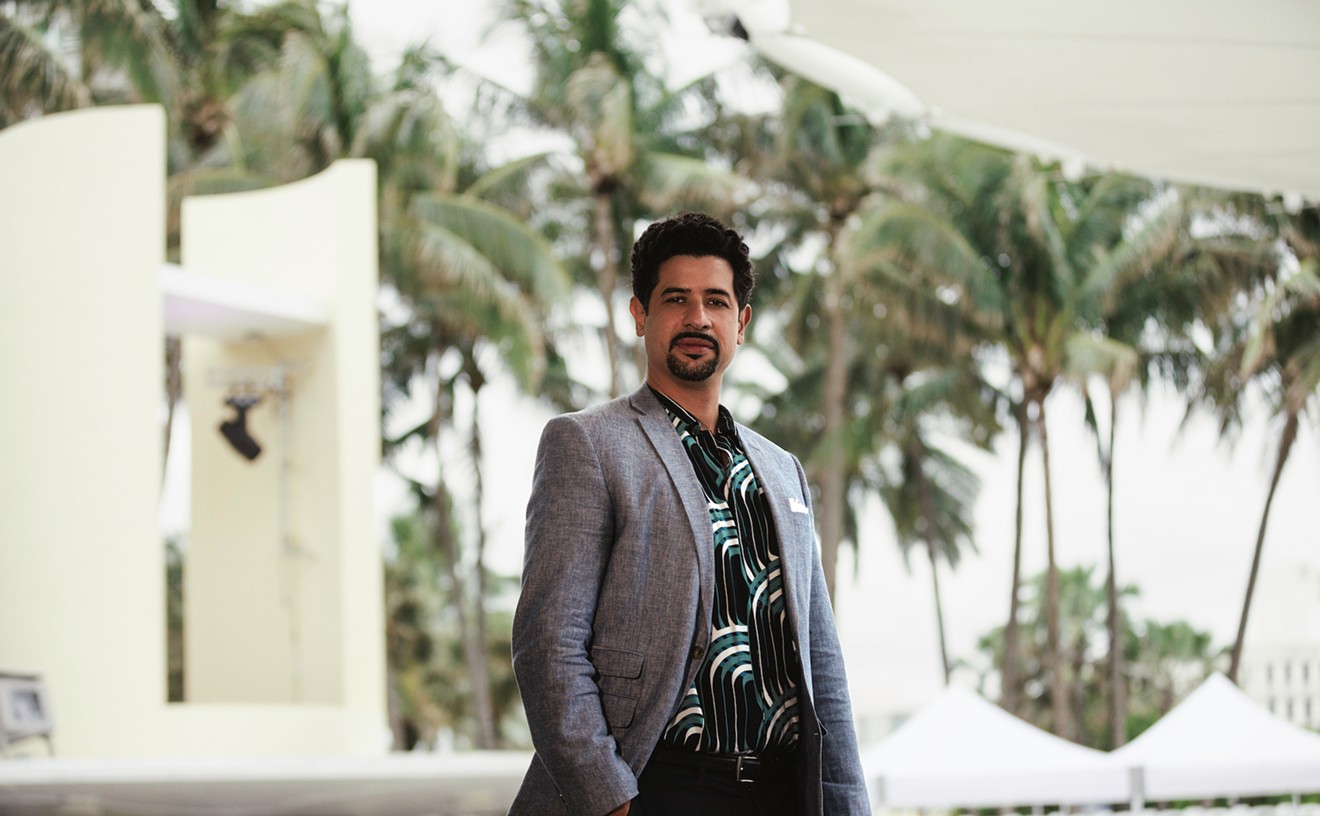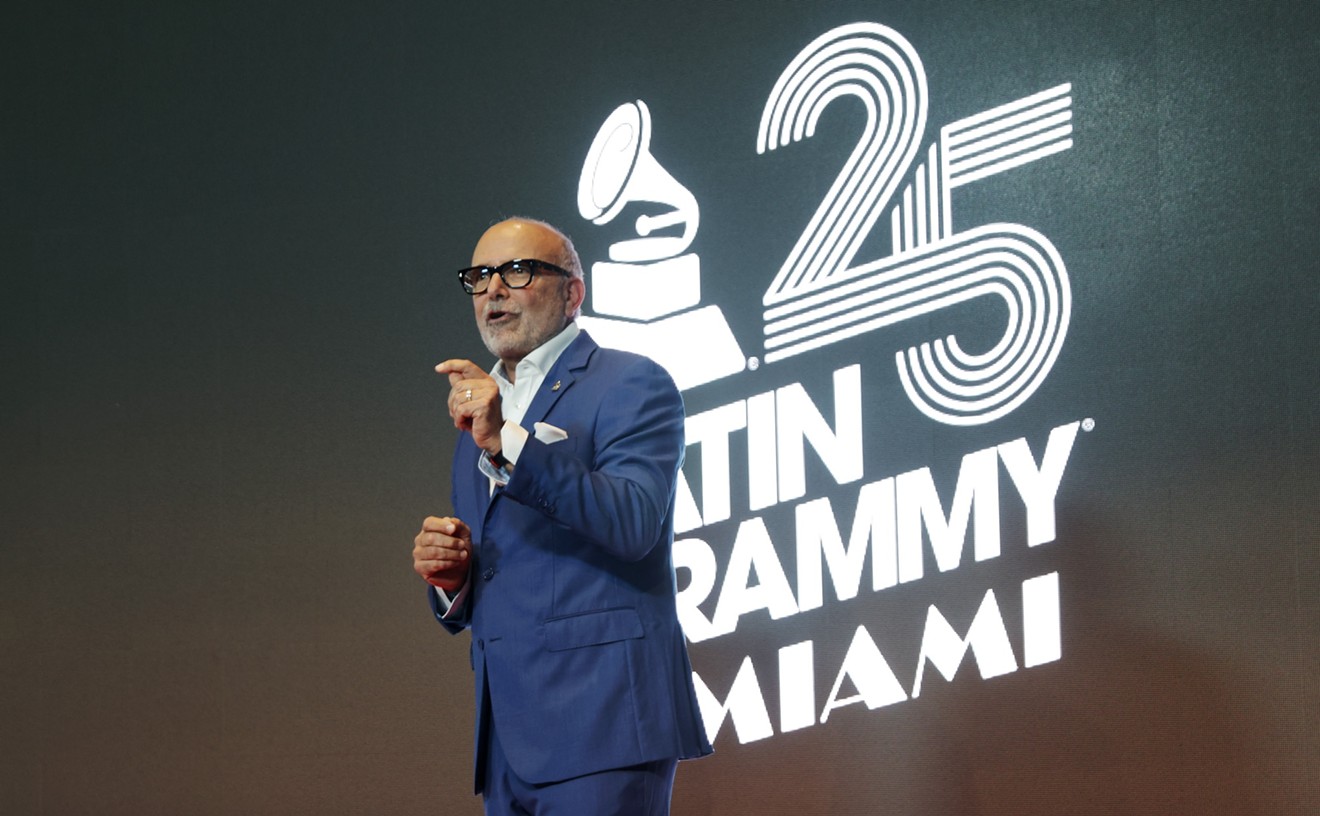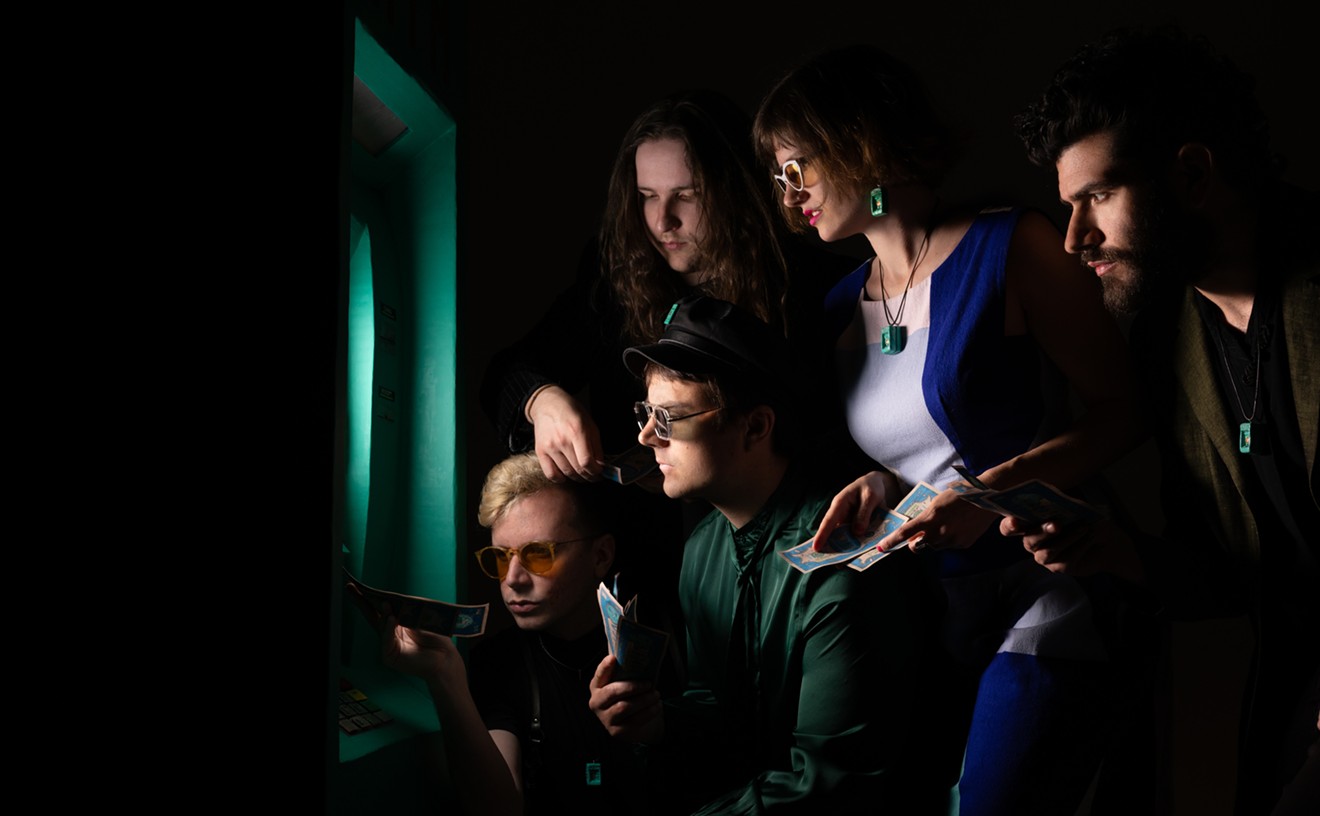The laughter of Miami Shores resident Allison, it turns out, is genuine. His staccato chuckle results not from nervousness or a desire to fill conversational space but rather from a joyous life. A man who describes his childhood as "ideal" and who understands the advantages of being something of a recording newcomer at age 46, Allison demonstrates a natural exuberance in both his demeanor and his music.
After Hours, his second release for the Contemporary imprint and his third overall, is a concept album based on Erskine Hawkins's classic title blues tune. It also includes nine of Allison's own similarly spirited compositions -- among them "Midnight Groove," "Double Shot," "No Cover," "Sittin' In," and "Straight Up." The album's unifying theme -- the smoky excitement of a jazz club -- was suggested by Bob Weinstock, the record's producer. Allison, who plays clarinet and flute in addition to tenor and alto saxophones, recruited South Florida jazz luminaries organist-pianist Dr. Lonnie Smith, sax player Turk Mauro, and drummer Danny Burger to participate in the project.
"I'm a club rat," explains Allison. "I love playing in nightclubs more than any other venue. There's nothing like midnight on a Saturday night with a club packed, the band smokin', and the people grooving -- it's the greatest feeling in the world. You just don't get the same feeling when you play concerts, even if it's for thousands of people, because there's 100 feet between you and the audience. You don't have the intimacy of having people two or three feet in front of you."
In many ways Allison's jaunty, unbridled playing style is a perfect reflection of his warm personality. His blowing contains little of the melancholy of Miles Davis, the spiritual searching of John Coltrane, or the manic, often drug-fueled rampaging that Charlie Parker, his idol, transformed into musical majesty. Allison's playing is informed and, in contrast to many of the great jazz masters, carefree. His musical statements command authority and respect, but their message is uplifting, optimistic, and accessible. Primed by Allison's merry mood, After Hours steams with the bacchanalian air of the pleasure seeker.
The album was recorded in two five-hour sessions in July 1997 at Saturn Sound Studios in West Palm Beach, with many of the ten tracks captured on the first take. While Allison jokes that the record's mood was created by "everyone smoking three packs of cigarettes and blowing smoke in the studio," the real credit belongs to the professionalism and talent of the saxophonist himself and his collaborators.
"All the guys on the CD were so good, if I had said I wanted this to be like [Fort Lauderdale club] O'Hara's at one in the morning on Saturday, then they could do it," Allison notes. "As it happened, they did it anyway, just without the talking in the background. The guys were businesslike only in the sense that they're so professional they take care of business, but otherwise it was very loose. There was a lot of fooling around, but not to the detriment of the session. Dennis Marks [bass] and John Bailey [trumpet] both had to leave the next day, so everyone knew that this was it -- we had to do it right the first time."
Smith credits the sessions' ease to Allison's abilities as both player and leader. "Lots of fellas waste time in the studio, but Eric got right down to business," says Smith. "You have to be a great sideman to be a great leader. You have to know how to play with people. When I play with George Benson, I know I have to support him, without destroying the feeling of his song or pushing my own thing. Eric can do that, and he's a versatile musician. He puts lots of colors and tastes into the things he plays -- gives songs just the right texture."
The CD has a particularly bluesy feel, a characteristic that permeates Allison's playing. This quality stems from a combination of a jazz-blues connection that the sax player believes is inherent in the music, plus the blues orientation of his partners. "The tunes were written specifically for this CD, and many of them were blues-based, but particularly the ones with Lonnie," Allison points out between bites of a Greek salad. "He's just drenched, steeped in the blues. I've never loved playing blues with anyone as much as with Lonnie. Sometimes when we're at O'Hara's, we'll be playing a blues and I practically have to pull the horn out of my mouth. It makes you feel like you can just blow forever.
"If you don't have a foundation in the blues as a jazz player, then you ain't a jazz player. Jazz is based on blues; it all comes from blues. Charlie Parker, the most advanced musician of all time, was based in the blues. He grew up in Kansas City and was around that music all the time. You can hear it even in the complex stuff he plays."
According to Allison, an appreciation of jazz's history is essential to the development of a jazz player, and his own background bears this out. Born in early 1951 in South Bend, Indiana, he lived in that town and then on a nearby farm for three years before his family moved to Sarasota when he was nine years old. "I had two wonderful, loving parents, and I was one of the rare people who had two sets of grandparents there in South Bend," he remarks. "They lived on farms, and my dad eventually bought a farm. We had 120 acres: soybeans, corn, about thirteen or fourteen ponies, a gazillion cats, and one pig -- the token pig. The longer I live and the more people I meet, the more family histories I delve into, I'm so thankful for the childhood I had."
Allison's father was a jazz nut, but Eric and his older brother Dave grew up listening to the Beatles and other early- to mid-Sixties rockers. Eric originally thought of his father's music as "garbage," but the jazz bug crept up on him unexpectedly in junior high school. "Dad loved the big bands and Dixieland music -- Bob Crosby and the Bobcats, Count Basie, Stan Kenton," Allison notes. "Most jazz people got into Miles Davis and John Coltrane, what was happening then, but I wanted to know where all this stuff came from, so I bought Louis Armstrong and Bix Beiderbecke, and all this stuff from the Twenties. It wasn't until much later, in college, that I really started getting turned on to the newer players." Allison became a virtual jazz encyclopedia, absorbing the swing-era influences of Coleman Hawkins, Ben Webster, and Lester Young before investigating bebop. For Allison it is this embrace of jazz's roots that completes him as a player. "I've always been a late bloomer," Allison says reflectively. "Occasionally the times seemed to have left me behind because I went backward instead of forward. Now I'm so thankful I did that."
Allison, twice divorced and currently living with his girlfriend, has made an almost steady career out of playing music in South Florida for the past 25 years. After moving here in the early Seventies to get his master's degree in jazz pedagogy at the University of Miami, Allison began playing all types of music to make a living. To this day he still performs at conventions and private parties in addition to his work at jazz venues. He made a brief pilgrimage to experience the New York City jazz scene in 1979, returning after only six months. "I don't think you're a complete musician until you've done the New York thing," says Allison. "I had a great time but I was like a manic depressive -- things were great one minute and horrible the next. I went through my money very quickly. The bottom line was that it wasn't the kind of place I wanted to live in. I would have had to get at least one day job, possibly two, just to hang in there, whereas down here I can make a living just playing. I don't teach, don't have a day gig. I don't even teach privately."
Allison recorded and issued his first album, Live at Ziegfield's, in 1984 with pianist Jack Keller. The duet recording won positive reviews in major jazz publications such as Cadence and Down Beat, but it wasn't until 1996 that Allison recorded again. He owes the second phase of his recording career to Weinstock, who founded the legendary Prestige Records in 1949 and sold it to Fantasy, Contemporary's parent company, in 1972. Weinstock now produces artists for Fantasy; he brought Allison to the label after hearing him play on numerous occasions.
"The first time I heard him playing with [pianist] Billy Marcus, I was unimpressed, I didn't like him, really," Weinstock recalls. "I heard him at [the Aventura club] Waterways a bit later and thought he was better. But when I saw him with Turk Mauro on a cruise ship, he was really cookin', playing tremendous. That's when I decided to record him. Eric is a student of jazz who can play all styles. He brings a variety of styles to a session, and not many musicians can do that. Most jazz musicians are pretty limited."
Allison's first recording for Contemporary, Mean Streets Beat, was released in late 1996 with many of the same players who perform on After Hours, including Mauro, Smith, and Burger. Allison feels that After Hours is the logical extension of Mean Streets Beat in its groove orientation. "Once I did an album with Bob and saw what he liked, I wrote more groove-oriented material. When I saw the track sequence he programmed for Mean Streets Beat, I got a good idea of what he wanted, and I wrote in that groove for After Hours."
After his dinner, Allison takes a seat next to guitarist Kelly Dow and vocalist Julie Davis. Allison begins the set on clarinet during the slow New Orleans shuffle "Am I Blue?," switching to saxophone in midsong. The bar patrons, some seated not more than ten feet from the performers, barely acknowledge the trio. But the musicians play as if the crowd is right there with them, soaking in all the glorious harmony. Allison's saxophone tone is bright, with simple, elegant flutters complementing Davis's earthy vocals. He senses the nuances in the duo's every note, filling in the breaks without crowding them and mimicking the occasional guitar or vocal riff. He clearly knows when to lay back and when to soar.
"He's all ear," notes Davis, a vibrant, almost hyperactive young woman. "He doesn't have his own agenda -- he just goes with the flow. He listens to you. He's great at creating his own interpretations. Accompanying a singer is tough; it takes sensitivity and sensibility. A lot of sax players will step on a phrase, but Eric can harmonize and not get in my way. He pushes me to create with him."
While for this particular crowd the threesome's cool tunes might be music-to-wait-for-your-table-by, the club-rat sax player remains upbeat. The music is smokin', and the audience is close, just the way he likes it. The people may not be groovin', but he is, and that's reason enough to share a laugh.
Eric Allison performs at 9:00 p.m. tonight (Thursday) and Sunday, February 22, at O'Hara's Pub, 722 E Las Olas Blvd, Fort Lauderdale; 954-524-1764. Admission is free.










